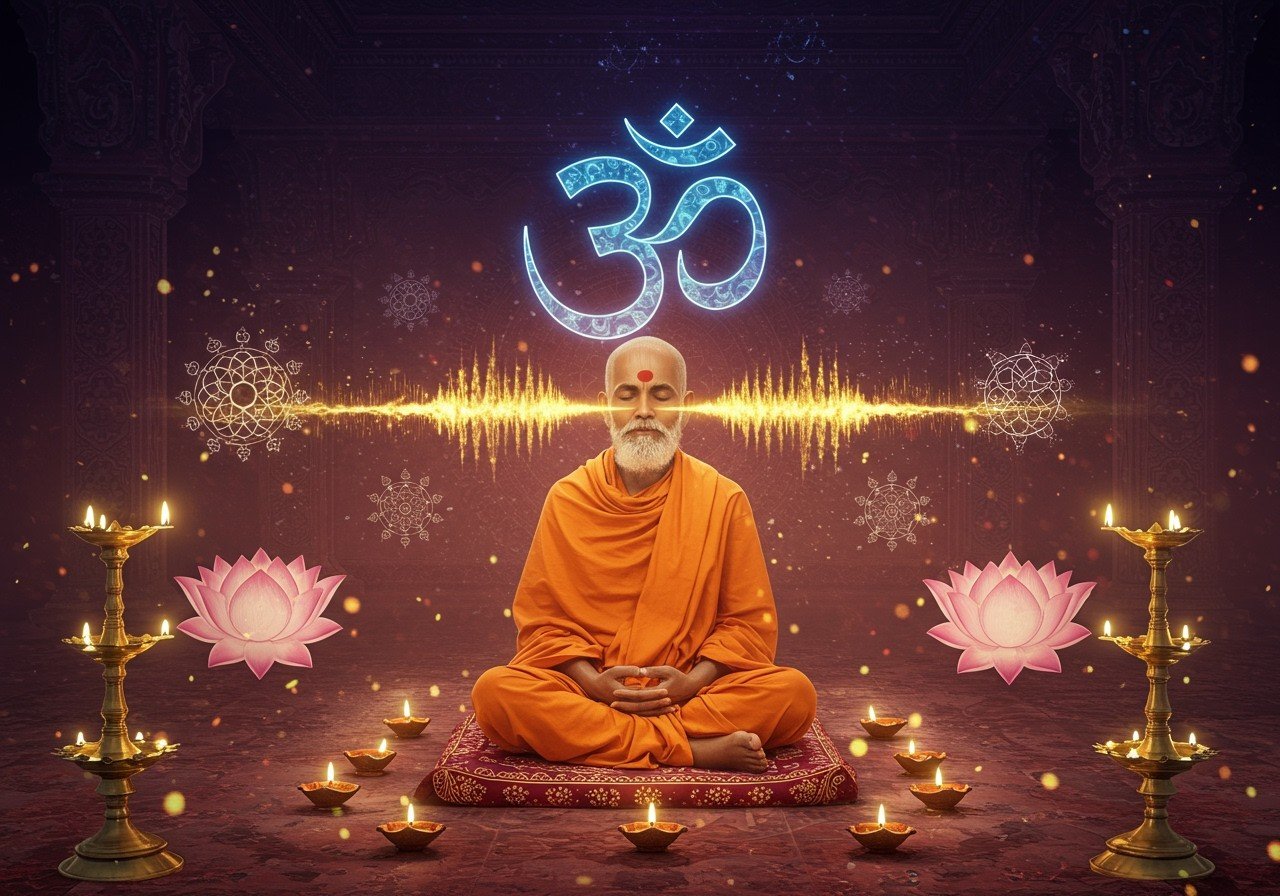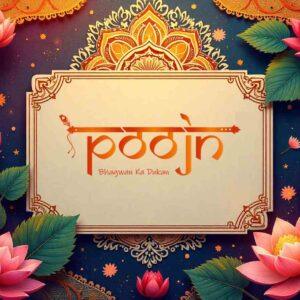
In the realm of Sanskrit, where spirituality intertwines with tradition, lies the intricate art of Svara Sandhi and Mantras. These elements are fundamental to grasping the profound beauty and depth of Sanskrit grammar, enriching our spiritual practices. This guide is lovingly crafted for those who deeply value our cultural heritage and seek the convenience of online resources to enhance their understanding.
Unveiling the Beauty of Svara Sandhi
Svara Sandhi, a unique facet of Sanskrit grammar, governs the harmonious blending of vowels at word junctions. It ensures a smooth, melodic flow to Sanskrit verses, much like a gentle stream flowing through a valley. Different forms of Svara Sandhi, such as Savarna Dirgha, Guna, and Vriddhi, each play a distinct role, adding to the richness of the language. Mastering these rules not only allows for accurate pronunciation but also unlocks a deeper understanding of sacred texts. Classic examples illustrate how Svara Sandhi elevates the rhythm of mantras, imbuing them with a poetic touch, resonating with the soul.
The Sacred Role of Sandhi in Mantras
Within the chanting of mantras, Sandhi rules play a vital role, weaving together sounds seamlessly while preserving their inherent meaning. Svara Sandhi, in particular, influences the potency of mantras; even subtle variations in pronunciation can alter their spiritual resonance. In Vedic rituals, correct pronunciation is paramount, as the vibrations of sound are believed to resonate through the cosmos, carrying our prayers and intentions. By understanding these rules, practitioners can refine their mantra recitation, deepening their connection to the divine.
Svara Mantra: A Symphony of Sound and Meaning
Svara Mantras, deeply rooted in the principles of Svara Sandhi, draw their structure from the harmonious interplay of sounds. These mantras harness the natural harmony of sound to evoke profound spiritual experiences, creating a bridge between the earthly and the divine. The underlying philosophy recognizes sound as a manifestation of divine energy, a powerful force capable of transformation. Svara Mantras, often used in meditation and healing practices, offer a wealth of interpretations, inviting us to explore the depths of their meaning and experience their transformative power. Many popular examples exist, each carrying its unique vibration and significance.
Practical Applications of Svara Sandhi in Rituals
Integrating Svara Sandhi into our rituals enhances practices like pujas and yajnas, infusing them with authenticity and depth. A firm grasp of these rules safeguards the accurate transmission of traditions across generations, honoring the wisdom of our ancestors. For those seeking guidance, listening to guided recitations or studying with a knowledgeable guru can illuminate the path to mastery. You can discover authentic Puja Samagri and other essential items for your rituals at Poojn.in. We offer a wide selection to support your spiritual practices.
Navigating the Challenges and Embracing the Rewards of Learning Svara Sandhi
The journey of learning Svara Sandhi may present challenges, particularly with its intricate rules and nuanced pronunciation. Yet, solutions abound for dedicated seekers. Online courses, immersive workshops, and supportive community groups offer valuable resources for learning and growth. Technology also plays a role, with apps and digital tools making learning more accessible. Ultimately, patience and dedication are the keys to unlocking the treasures of this ancient art, leading to long-term benefits in spiritual practice and understanding.
Delving Deeper into Sandhi Types
Sanskrit encompasses two primary forms of Sandhi: Internal (Antaranga) and External (Bahiranga). Internal Sandhi operates within words, at the junctures of morphemes, while External Sandhi governs the interplay of sounds between words or within compound terms, creating a harmonious flow of language.
Categories of Sandhi Rules
- Vowel Sandhi (Ach/Svara): This category addresses the combination of vowels, ensuring seamless transitions. Vowels may merge, transform, or even be elided to avoid the juxtaposition of two vowels without modification, maintaining the melodic quality of Sanskrit. This meticulous attention to detail reflects the reverence for sound in Sanskrit tradition.
- Consonant Sandhi (Hal/Vyanjan): This type of Sandhi focuses on the interaction between consonants and vowels or other consonants. The rules are intricate, reflecting the complexity of Sanskrit phonetics, and mastering them allows for a deeper appreciation of the language’s structure.
- Visarga Sandhi: This category governs modifications to the Visarga (ḥ), a unique sound in Sanskrit, depending on the surrounding sounds. The Visarga, a subtle exhalation, takes on different forms depending on its phonetic context, showcasing the nuanced nature of Sanskrit pronunciation.
Guiding Principles of Sandhi
- Euphony: The cornerstone of Sandhi is euphony, the avoidance of harsh or jarring combinations of sounds. This principle reflects a deep appreciation for the aesthetic quality of language, ensuring that Sanskrit remains pleasing to the ear and conducive to spiritual practice.
- Assimilation: Sounds often adapt to resemble neighboring sounds, creating a sense of flow and unity within words and sentences. This principle demonstrates the interconnectedness of sounds in Sanskrit and the tendency towards harmony.
- Combination: Sometimes, two distinct sounds merge to form a new, composite sound, further enriching the sonic tapestry of the language. This merging of sounds represents a deeper integration and fusion of linguistic elements.
- Substitution: In certain contexts, one sound may be replaced by another, creating subtle shifts in pronunciation and meaning. This principle highlights the flexibility and adaptability of Sanskrit sounds.
- Deletion: Occasionally, a sound may be dropped altogether to enhance fluidity and avoid awkward combinations. This principle shows the economy and efficiency of Sanskrit, streamlining pronunciation while retaining meaning.
Mantras and the Sanctity of Sound
In Vedic mantras, preserving the integrity of sound is of paramount importance. At times, even grammatical rules may be subtly adjusted to maintain the sonic qualities, particularly the tone (svara) and duration (matra), of the mantra. This reverence for sound reflects the belief in its inherent power and its ability to connect us to the divine.
The Significance of Syllables
Accurate syllable division (akshara) is essential for proper pronunciation and chanting, forming the foundation of mantra recitation. Each syllable must contain a single vowel, and Sanskrit typically avoids the direct juxtaposition of two vowels without modification. Sandhi rules elegantly address this by combining vowels into semi-vowels or composite vowels, preserving the rhythmic integrity of the chant.
Rhythm and Tone: The Heartbeat of Mantras
Syllables are classified as heavy (guru) or light (laghu), influencing the rhythm and meter (chandas) of a mantra. Sandhi rules can influence this classification, subtly shaping the rhythmic flow of the chant. Tonal accents (Svaras) further refine pronunciation, ensuring accuracy and preserving the traditional nuances of Vedic chanting. The Vedas offer unique manuals called Pratishakhyas, which meticulously guide the placement of tonal accents in accordance with Sandhi rules, ensuring the perfect sonic expression of each mantra.
Examples of Sandhi in Action
- Two similar vowels often merge to form a single, elongated vowel, creating a smooth transition and a sense of continuity.
- Vowels can combine and strengthen, enhancing the sonic resonance of the mantra and adding to its power.
- The Visarga (ḥ) undergoes transformations based on the sounds that follow it, showcasing the dynamic nature of Sanskrit phonetics.
Sandhi, in its essence, safeguards the harmonious flow of sounds, preserving the sacred potency of Sanskrit mantras. It ensures that the sounds resonate smoothly and harmoniously, honoring the integrity and power of these sacred utterances.
How Poojn.in Supports Your Mantra and Svara Sandhi Practice
At Poojn.in, we understand the importance of having the right resources for your spiritual journey. We offer a curated selection of items to support your mantra recitation and ritual practices, especially for those delving into the nuances of Svara Sandhi and mantras. Here are some of the ways we can assist you:
- Sanskrit Prayer Books: Our collection includes clear, easy-to-follow guides with accurate pronunciation markings, enabling you to chant with confidence and precision. We offer a wide range of books featuring mantras and spiritual texts.
- Digital Audio Recordings: Immerse yourself in authentic chanting by qualified priests, providing a reference for proper pronunciation and rhythm. These recordings can serve as a guide for your practice and enhance your understanding of Svara Sandhi.
- Rudraksha Malas: Our selection of 108-bead Rudraksha malas, traditionally used for mantra counting, are crafted with care and reverence, supporting your focus during meditation and recitation.
- Pure Copper Water Vessels: Store blessed water during mantra practice in our pure copper vessels, believed to enhance the positive energy of the water.
- Brass Bell Sets: Find traditionally crafted brass bells with the correct resonance for ritual use, adding depth and authenticity to your practices. Browse our selection here.
- Meditation Seats: Maintain comfortable postures during extended mantra sessions with our range of meditation seats (asanas), designed to support your practice.
Our dedicated team of experts is always ready to assist you in selecting the perfect items for your specific needs. Reach out to us at 03369029784 or WhatsApp us at 9476142738 for personalized guidance.
Explore our comprehensive collection of authentic ritual items at www.poojn.in. We ensure that each product meets traditional standards, offering the convenience of online shopping and doorstep delivery across India, with secure packaging for every order.
Note: Prices and availability are subject to change. Please visit our website for the most up-to-date information.
Embracing Tradition in the Modern Age
Understanding Svara Sandhi and mantras opens a gateway to the rich tapestry of Sanskrit, seamlessly blending tradition with spiritual depth. These elements are not merely rules but pathways to preserving the essence of ancient rituals and the beauty of the language. By embracing both the challenges and the rewards of learning, we forge a deeper connection with our cultural heritage while enjoying the convenience of online resources. As we honor the wisdom of the past, we also welcome new avenues for learning and growth. May this guide serve as a beacon, illuminating your exploration of Sanskrit with respect and ease, enriching your spiritual journey and daily life.
Common Questions about Svara Sandhi and Mantras
Here are some frequently asked questions that may further clarify your understanding:
What exactly is Svara Sandhi? Svara Sandhi, a cornerstone of Sanskrit phonetics, involves the harmonious blending of two sounds or syllables. It comes into play when vowels meet within a sentence, resulting in modifications to pronunciation or spelling, creating a smooth and melodious flow.
Why does Svara Sandhi hold such importance in Sanskrit? Svara Sandhi is essential for ensuring a seamless transition between sounds, making the language more harmonious and conducive to chanting, especially in Vedic texts. It contributes significantly to the rhythmic beauty and spiritual resonance of the language.
How does Svara Sandhi influence Mantras? In mantras, Svara Sandhi can alter the pronunciation of words, impacting the rhythm and flow, making the chant more potent and pleasing to the ear. This attention to sound reflects the deep connection between sound and spiritual energy in mantra practice.
What is the essence of a Svara Mantra? A Svara Mantra is a sacred chant or phrase in Sanskrit that utilizes the principles of Svara Sandhi. It artfully combines sounds to enhance spiritual energy and focus during meditation or rituals, creating a resonant connection with the divine. Consider exploring our collection of Sanskrit Mantras at Poojn.in.
What is the deeper meaning conveyed by a Svara Mantra? The true meaning of a Svara Mantra resides not only in its literal translation but also in the potent energy it generates when chanted with the correct pronunciation, using the principles of Svara Sandhi. The vibrations of sound are believed to carry spiritual significance, influencing our inner state and connecting us to deeper realms of consciousness. Learn more about the power and purpose of mantras in daily life through our insightful blog post on Mantras: Their Power and Purpose in Daily Life.
Is learning Svara Sandhi and Mantras accessible to everyone? Absolutely! Anyone can embark on the journey of learning Svara Sandhi and mantras. With dedicated practice and proper guidance, mastering the pronunciation and effectively incorporating them into spiritual practices is achievable. Explore more about Hindu Gods and Goddesses at Poojn.in.
Are Svara Sandhi and Mantras exclusively part of Hindu traditions? While deeply rooted in Hindu traditions, the practice of chanting mantras and the principles of sound, including elements similar to Svara Sandhi, resonate across various cultures and spiritual paths. People from diverse backgrounds embrace these practices for meditation, inner peace, and spiritual growth, recognizing the universal power of sound and intention. Find delicious Prasad recipes at Poojn.in to enhance your spiritual offerings.


